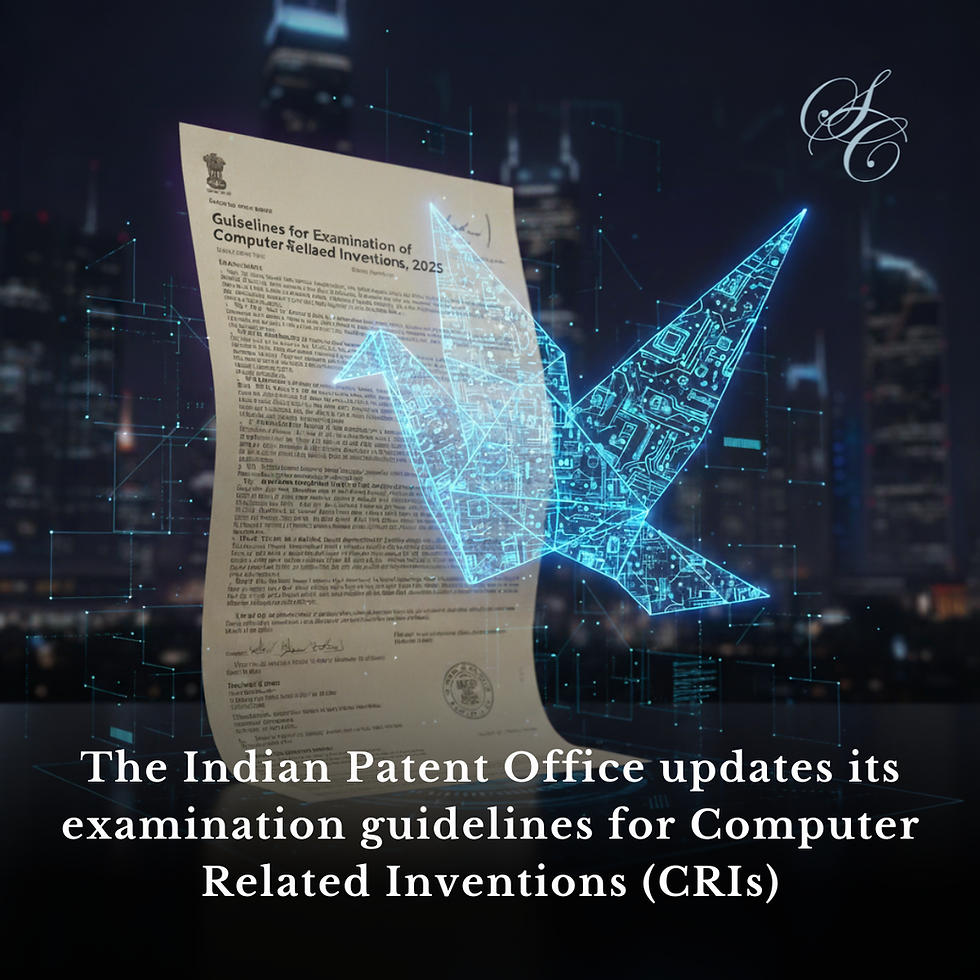Google’s Recent Policy Change for Tackling Counterfeiters
- Sarwajeet Singh
- Jun 30, 2020
- 3 min read
Our Senior Associate, Shruhita Amit discusses “Google’s Recent Policy Change for Tackling Counterfeiters”
Google recently updated its Legal Trouble Shooter Form to facilitate the removal of webpages featuring counterfeit goods from its organic (non-advertisement) search results. This is in line with the approach that it has taken for some other types of take-down requests/notices such as, requests made under the Digital Millennium Copyright Act (DMCA).
In the background of a constant battle against online counterfeiters, this is a welcome change for trade mark owners. While the Google Ads policy has, for a long time, barred advertisement of counterfeit goods, no similar recourse was available against problematic web pages appearing in Google’s search results. In fact, previously, Google refused to remove organic search results without a court order. As a result, links to webpages selling counterfeit goods, continued to feature in the search results. In 2019, Incopro, an online IP and brand protection software provider, conducted a Study across five sectors[1] which revealed some pertinent statistics regarding counterfeits featuring in organic search results. As per this study, up to 60% results returned by search engines are for websites which feature counterfeit goods or otherwise infringe intellectual property. The study further revealed that almost 50% of the web traffic on these harmful websites is directed from organic search results and more than 25% of these websites appear within the first three search results.
Google has now added ‘Counterfeit: sale of counterfeit goods’ as a ground for removal of content from its search results. It defines counterfeit goods as those which “contain a trademark or logo that is identical to or substantially indistinguishable from the trademark of another. They mimic the brand features of the product in an attempt to pass themselves off as a genuine product of the brand owner.”[2] For removing a webpage featuring counterfeit goods, the complainant has to manually file a complaint using the available form, pursuant to which a Google employee will review the impugned webpages and decide whether to remove them.
However, the submission process has a few limitations. Most importantly, only specific webpages can be reported instead of the entire websites. It is pertinent to note here that many of these websites are dedicated to selling fake goods and have no legitimate purpose. As such, it would better to remove the entire website rather than individual web pages. Further, this protection is currently limited to only counterfeit goods, and does not extend to other forms of trademark infringement. Also, a request under this new policy can only be made by either a trade mark owner or his/her agent. As such, a non-aggrieved party cannot make a request in public interest.
In conclusion, while this new policy is a step forward towards protecting the rights/interests of trade mark owners as well as consumers (who may unwittingly click on links featuring counterfeit goods), there is a lot more that Google can do to effectively protect the rights/interests these parties. For instance, it can remove the above-noted limitations, inter alia, as regards the subject matter of the complaint (web pages v. complete websites) or the persons competent to file removal requests (person aggrieved v. anyone). Further, Google can use the manually filed removal requests to the develop algorithms and systems that identify and remove links to sites that consistently sell counterfeits.
We do hope that, with time, we move towards a more effective brand protection regime, with search engines, such as, Google assuming greater responsibility as regards the content they feature, including, in their organic search results.
[1] Pharmaceuticals (focusing on antibiotics), Automotive (focusing in airbags), Children’s Products (focusing on teethers for babies), Safety Equipment (focusing on cycle helmets) and White goods (focusing on water filters)




Comments